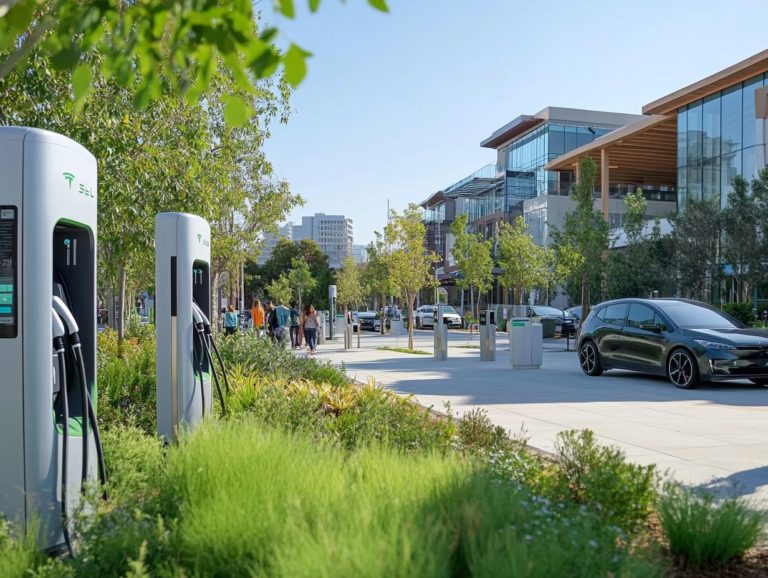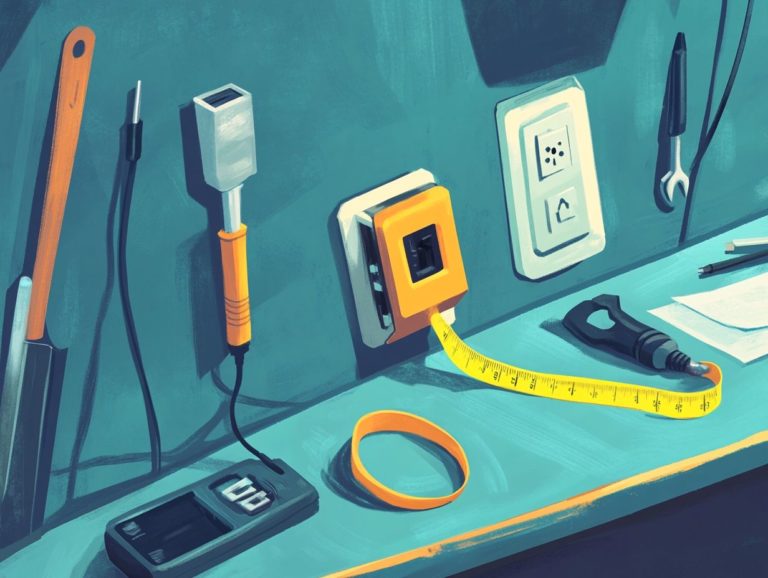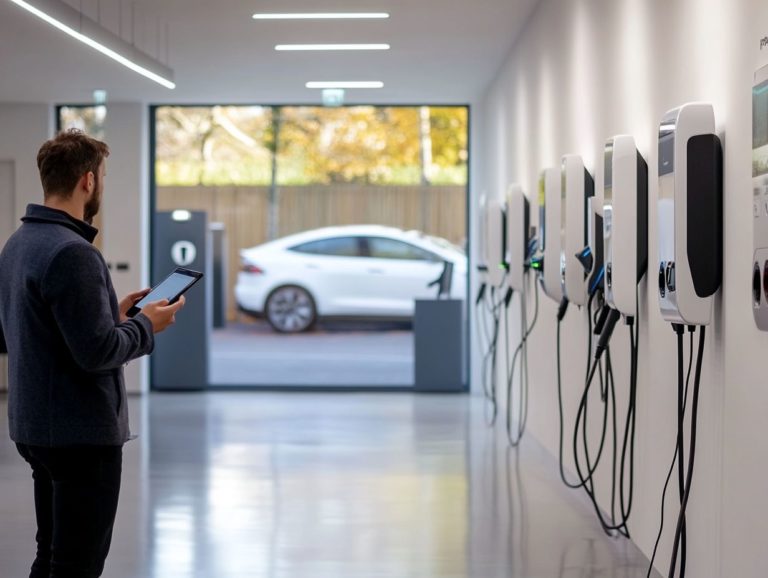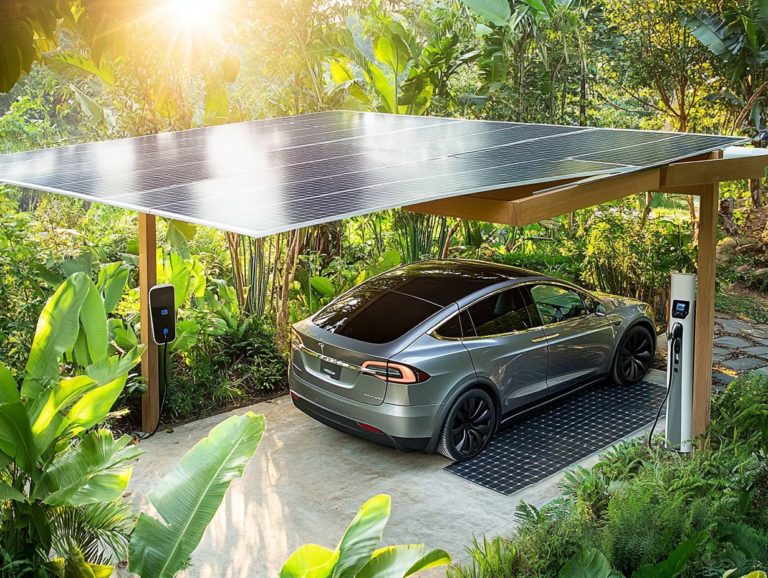The Future of Ultra-Fast EV Charging
Ultra-fast EV charging stands out as a transformative innovation that significantly minimizes downtime for drivers.
In this exploration, you’ll discover the limitations of traditional charging methods and the advancements in ultra-fast technology, along with the benefits it offers.
You’ll gain insights into its future and explore the potential of ultra-fast charging and its profound impact on the way you drive.
Contents
- Key Takeaways:
- The Need for Faster Charging
- Advancements in Ultra-fast EV Charging Technology
- Benefits of Ultra-Fast EV Charging
- The Future of Ultra-Fast EV Charging
- If You’re Considering Ultra-Fast EV Charging, Here Are Key Points to Consider:
- Frequently Asked Questions
- Have questions about the future of ultra-fast EV charging? Here’s what you need to know.
- What are some benefits of ultra-fast EV charging?
- How does ultra-fast EV charging work?
- Will ultra-fast EV charging become the new standard for electric vehicles?
- What advancements in technology are driving the future of ultra-fast EV charging?
- How can I access ultra-fast EV charging stations?
Key Takeaways:
- Ultra-fast EV charging technology is rapidly advancing, with new techniques and infrastructure developed to meet the growing demand for faster charging options.
- The future of ultra-fast EV charging holds significant benefits, including drastically reduced charging times and increased range, making EVs more convenient and practical for everyday use.
- While the cost and availability of ultra-fast charging may be concerns for some consumers, the potential impact on the environment and the transportation industry cannot be ignored.
What is Ultra-fast EV Charging?
Ultra-fast EV charging is a groundbreaking solution that significantly cuts down the time it takes to recharge electric vehicles (EVs), making your charging experience much more convenient as an eco-conscious driver.
Thanks to advancements in battery technology and charging infrastructure, these systems deliver rapid energy supply, playing an essential role in the shift towards sustainable transportation. Ultra-fast chargers are transforming the electric vehicle market, ensuring the power grid can meet growing energy demands while keeping carbon emissions to a minimum.
In contrast to traditional charging methods that often rely on standard AC outlets or slower DC options, ultra-fast chargers use special high-power connections. They can charge an electric vehicle from nearly empty to 80% in just 15 to 30 minutes.
With innovations like liquid cooling for charging lines and advanced communication protocols, safety and efficiency in energy delivery are guaranteed. As urban infrastructure continues to adapt, ultra-fast charging will be pivotal in alleviating range anxiety, making electric mobility more attractive to a wider audience, and ultimately fostering a more sustainable future.
The Need for Faster Charging
As the electric vehicle (EV) market expands, the demand for faster charging solutions becomes paramount, especially in addressing the range anxiety that often deters potential EV owners.
Building strong charging infrastructure is crucial for fostering electric vehicle adoption and facilitating a smooth transition to electric mobility.
Current Limitations and Challenges
Despite advancements in ultra-fast charging, challenges remain. These include long charging times and compatibility issues among different vehicle models, necessitating substantial infrastructure investments to keep pace with evolving battery technology and the increasing appetite for energy consumption.
You may encounter discrepancies in charging compatibility that can be quite perplexing. Not every station caters to every make or model, leading to frustrating moments when your vehicle isn’t compatible with an available station.
Another concern is calibrating charging solutions as poor calibration leads to longer charging times.
As the demand for faster, more reliable charging options continues to rise, stakeholders must enhance infrastructure to ensure a smooth transition to sustainable transportation.
Advancements in Ultra-fast EV Charging Technology
Recent advancements in ultra-fast EV charging technology are changing the electric vehicle landscape. Innovations in battery tech and ultra-fast chargers provide significant power faster than traditional methods.
Fast DC charging solutions and techniques like inductive charging offer a more efficient and convenient charging experience, enhancing your journey in electric vehicles.
New Charging Techniques and Infrastructure
New charging techniques and infrastructure are vital for adopting electric vehicles. Innovations like vehicle-to-grid technology (allowing EVs to supply energy back to the grid) and power boosters are reshaping energy flow and charging sites, optimizing energy consumption.
With vehicle-to-grid technology, your electric vehicle can feed energy back into the grid when needed, creating a dynamically energy source. Power boosters facilitate efficient energy transfer, minimizing downtime and accommodating more vehicles simultaneously. This interconnected network paves the way for a sustainable future, significantly impacting how energy is utilized and managed.
Benefits of Ultra-Fast EV Charging
The advantages of ultra-fast EV charging go beyond convenience. They are essential for advancing electric mobility by greatly reducing charging times and extending the range of electric vehicles.
This progress improves the charging experience for drivers and reduces carbon emissions from transportation.
Reduced Charging Time and Increased Range
Ultra-fast EV charging technologies drastically reduce charging times and expand the vehicle range, a game-changer for everyday use. By optimizing battery size and utilizing advanced fast charging technologies, you’ll enjoy a much more efficient energy consumption experience.
These advancements not only reduce the time spent tethered to charging stations but also significantly extend the operational range of electric vehicles, tackling one of the biggest concerns for potential EV buyers: range anxiety. As manufacturers maximize the potential of electric powertrains, battery performance and longevity become paramount. Enhanced smart charging systems further bolster this shift, enabling smarter charge cycles that adapt to energy demand and availability.
As these technologies continue to evolve, the overall charging experience will transform, making electric vehicles not only more user-friendly but also a more viable option for everyday transportation needs.
The Future of Ultra-Fast EV Charging
The future of ultra-fast EV charging is set for remarkable expansion, fueled by the pressing necessity for a robust charging infrastructure that supports the burgeoning electric vehicle market and the transition to cleaner transportation solutions.
Cutting-edge advancements in demand response (managing energy use during peak times) and power distribution are redefining how EV charging will develop, ensuring that the shift toward sustainable mobility is not only feasible but also efficient.
Predictions and Potential Impact
Expect a significant boost in charging power and the seamless use of renewable energy sources, enhancing efficiency and sustainability in charging.
As vehicle-to-grid technology gains traction, you’ll see an even greater boost in environmental benefits and energy management.
With continual advancements in battery technology, charging stations will likely adapt to accommodate higher voltages, leading to quicker recharge times that could transform your user experience. By harnessing solar, wind, and other renewable resources, these stations will contribute to a greener power grid.
Vehicle-to-grid systems will play a crucial role, allowing your EV to function as an energy storage unit that sends surplus power back to the grid during peak demand. This dynamic relationship between charging infrastructure and renewable energy can create a more resilient power ecosystem, ensuring that the transition to electric vehicles remains both efficient and environmentally friendly.
If You’re Considering Ultra-Fast EV Charging, Here Are Key Points to Consider:
- Evaluate the cost and availability of charging stations.
- Understand the specific charging requirements that vary among different electric vehicle models.
Grasping these factors is crucial for making well-informed decisions about adopting an electric vehicle. Isn’t it exciting to see how quickly EV charging is evolving?
Cost and Availability of Ultra-Fast Charging
The cost and availability of ultra-fast charging infrastructure are pivotal in your decision to adopt an electric vehicle. As a potential buyer, you weigh the price against the convenience offered by public charging stations.
The growth of this infrastructure is crucial for enhancing accessibility and lowering barriers for eco-conscious drivers. Government incentives, private investments, and technological advancements significantly impact the pricing and distribution of these charging points.
When evaluating the ease of charging your vehicle during daily commutes or long journeys, the presence of well-placed ultra-fast chargers can tilt your decision toward choosing an electric vehicle. A robust charging network instills confidence in you as a potential buyer, alleviating concerns about range anxiety and amplifying the appeal of eco-friendly transportation.
This seamless interaction between infrastructure and your choices ultimately shapes the future of sustainable driving.
Frequently Asked Questions
Have questions about the future of ultra-fast EV charging? Here’s what you need to know.
The future of ultra-fast EV charging is bright, with advancements in technology and infrastructure paving the way for faster and more convenient charging for electric vehicle owners.
What are some benefits of ultra-fast EV charging?
Ultra-fast EV charging offers several benefits, including shorter charging times, increased range for electric vehicles, and a more convenient and accessible charging experience.
How does ultra-fast EV charging work?
Ultra-fast EV charging utilizes high-powered charging stations that can deliver significantly higher amounts of electricity to a vehicle’s battery, allowing for faster charging times and increased range.
Will ultra-fast EV charging become the new standard for electric vehicles?
Many experts predict that ultra-fast EV charging will become the new standard for electric vehicles, as it offers a more practical and efficient solution for charging compared to traditional methods.
What advancements in technology are driving the future of ultra-fast EV charging?
Advancements in battery technology and charging infrastructure, such as improved battery chemistry and the development of higher-powered charging stations, are driving the future of ultra-fast EV charging.
How can I access ultra-fast EV charging stations?
Ultra-fast EV charging stations can be accessed through various methods, such as a charging network membership, a smartphone app, or by using a credit or debit card at the charging station.

.jpg_00.jpeg)
.jpg_01.jpeg)
.jpg_10.jpeg)
.jpg_11.jpeg)



